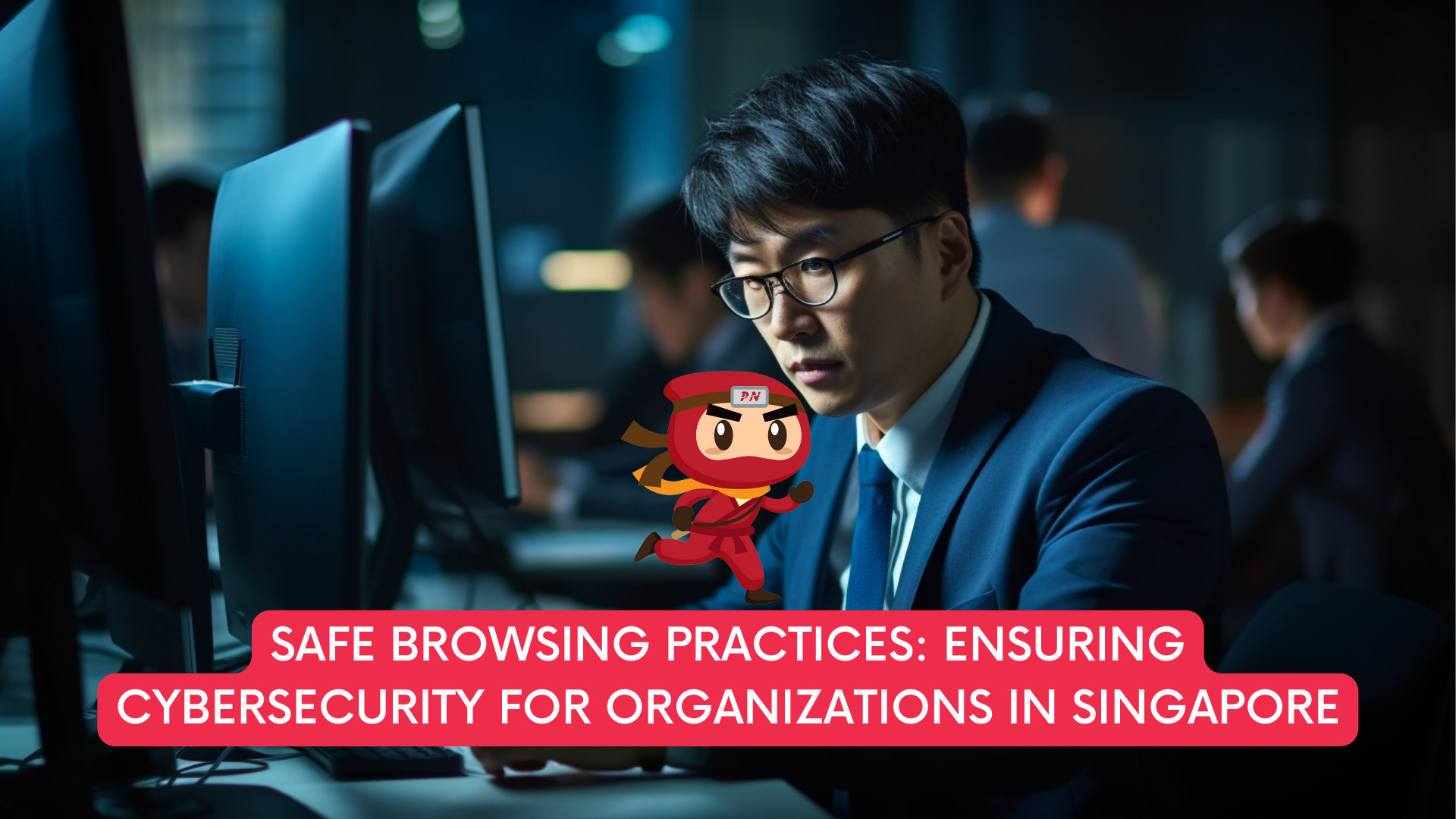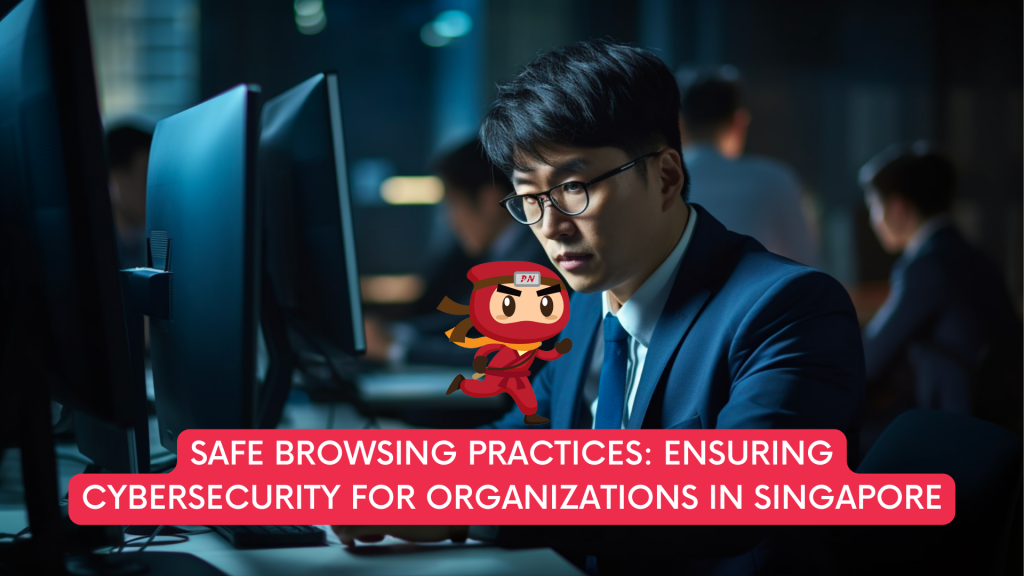KEEP IN TOUCH
Subscribe to our mailing list to get free tips on Data Protection and Cybersecurity updates weekly!







In an era defined by rapid technological advancements and increased connectivity, organizations in Singapore find themselves navigating a digital landscape brimming with both opportunities and risks.
As the digital realm becomes integral to business operations, the importance of safe browsing practices cannot be overstated. Safeguarding personal data, preserving customer trust, and maintaining operational integrity all hinge on adopting robust safe browsing practices.
In this article, we will delve into the significance of safe browsing practices for organizations in Singapore and provide actionable insights to fortify their cybersecurity posture.
Singapore is a global technology hub, with organizations across industries harnessing the power of digital tools to drive innovation, efficiency, and growth. However, alongside these advancements come cybersecurity threats that target vulnerabilities within an organization’s online presence. From phishing attacks and malware infiltration to data breaches and ransomware, the potential risks demand a proactive approach to ensure the security of digital operations.

Safe browsing practices involve employing security measures and strategies while accessing the internet and interacting with online content. These practices are designed to mitigate the risks posed by malicious websites, compromised links, and deceptive online tactics. For organizations in Singapore, the following aspects underscore the importance of integrating safe browsing practices:
1. Protection of Sensitive Data: Organizations routinely handle sensitive customer information, proprietary data, and financial records. Safe browsing practices help prevent unauthorized access and data leaks, preserving the confidentiality of valuable information.
2. Maintaining Reputational Integrity: A data breach or cyberattack can lead to significant reputational damage. Organizations that prioritize safe browsing practices can minimize the risk of being compromised and maintain the trust of their stakeholders.
3. Compliance with Regulations: Singapore’s data protection regulations, including the Personal Data Protection Act (PDPA), mandate stringent safeguards for personal data. Adhering to safe browsing practices ensures compliance with these regulations, avoiding hefty fines and legal consequences.
4. Business Continuity: A cyber incident can disrupt business operations, leading to financial losses and operational downtime. Implementing safe browsing practices contributes to business continuity by reducing the likelihood of cyber disruptions.
1. Keep Software Updated: Regularly update operating systems, browsers, and applications to ensure they are equipped with the latest security patches. This proactive approach closes vulnerabilities that attackers could exploit.
2. Implement Strong Access Controls: Enforce stringent access controls for employees accessing sensitive systems and data. Multi-factor authentication (MFA) adds an extra layer of security to user accounts.
3. Educate Employees: Conduct cybersecurity training sessions to educate employees about safe browsing practices, phishing awareness, and how to identify suspicious online content.
4. Use Secure Connections: When accessing sensitive information, ensure the use of secure, encrypted connections. Look for the “https” prefix in URLs and avoid using public Wi-Fi networks for confidential transactions.
5. Deploy Web Filtering Solutions: Utilize web filtering tools that block access to malicious websites and restrict access to non-business-related sites during work hours.
6. Implement Email Security Measures: Deploy email security solutions that identify and filter out phishing emails and malicious attachments. Employees should be cautious of unsolicited emails and verify the sender’s authenticity before clicking on links.
7. Regular Backups: Maintain regular backups of critical data to ensure quick recovery in the event of a cyber incident.
8. Create and Enforce Internet Usage Policies: Establish clear internet usage policies that define acceptable online behavior and outline consequences for policy violations.
9. Stay Informed: Keep abreast of the latest cybersecurity threats and trends. Subscribing to cybersecurity newsletters and participating in relevant workshops can enhance awareness.
10. Incident Response Plan: Develop and regularly update an incident response plan that outlines steps to be taken in the event of a cyber incident. This plan should be tested periodically to ensure effectiveness.

Safe browsing practices have transcended the realm of personal internet usage and are now integral to the success and security of organizations in Singapore. In an age where cyber threats are increasingly sophisticated, adopting a proactive stance towards cybersecurity is not just advisable—it’s imperative.
By implementing robust safe browsing practices, organizations can fortify their defenses, protect sensitive data, and ensure the sustained trust of their customers and stakeholders. As Singapore continues to thrive as a digital hub, organizations that prioritize safe browsing practices will emerge as leaders in cybersecurity and be well-equipped to navigate the complexities of the digital age.
Your appointed DPO can work with you on your PDPA compliance, ensuring that there will be policies in place to make sure that the handling of personal data is PDPA compliant.
A Data Protection Officer (DPO) oversees data protection responsibilities and ensures that organisations comply with the Personal Data Protection Act (PDPA). Furthermore, every Organization’s DPO should be able to curb any instances of PDPA noncompliance as it is the officer responsible for maintaining the positive posture of an organisation’s cybersecurity.
DPOs complement organisations’ efforts to ensure that the organisation’s methods of collecting personal data comply with the PDPA. It also ensures that policies are set in place to make sure that there will be no instances of data breaches in the future.
Don’t wait any longer to ensure your organisation is PDPA compliant. Take our free 3-minute PDPA Compliance Self-audit checklist now, the same “secret weapon” used by our clients to keep them on track. Upon completion, we will send you the results so you can take the necessary action to protect your customers’ data. Complete the free assessment checklist today and take the first step towards protecting your customers’ personal data.